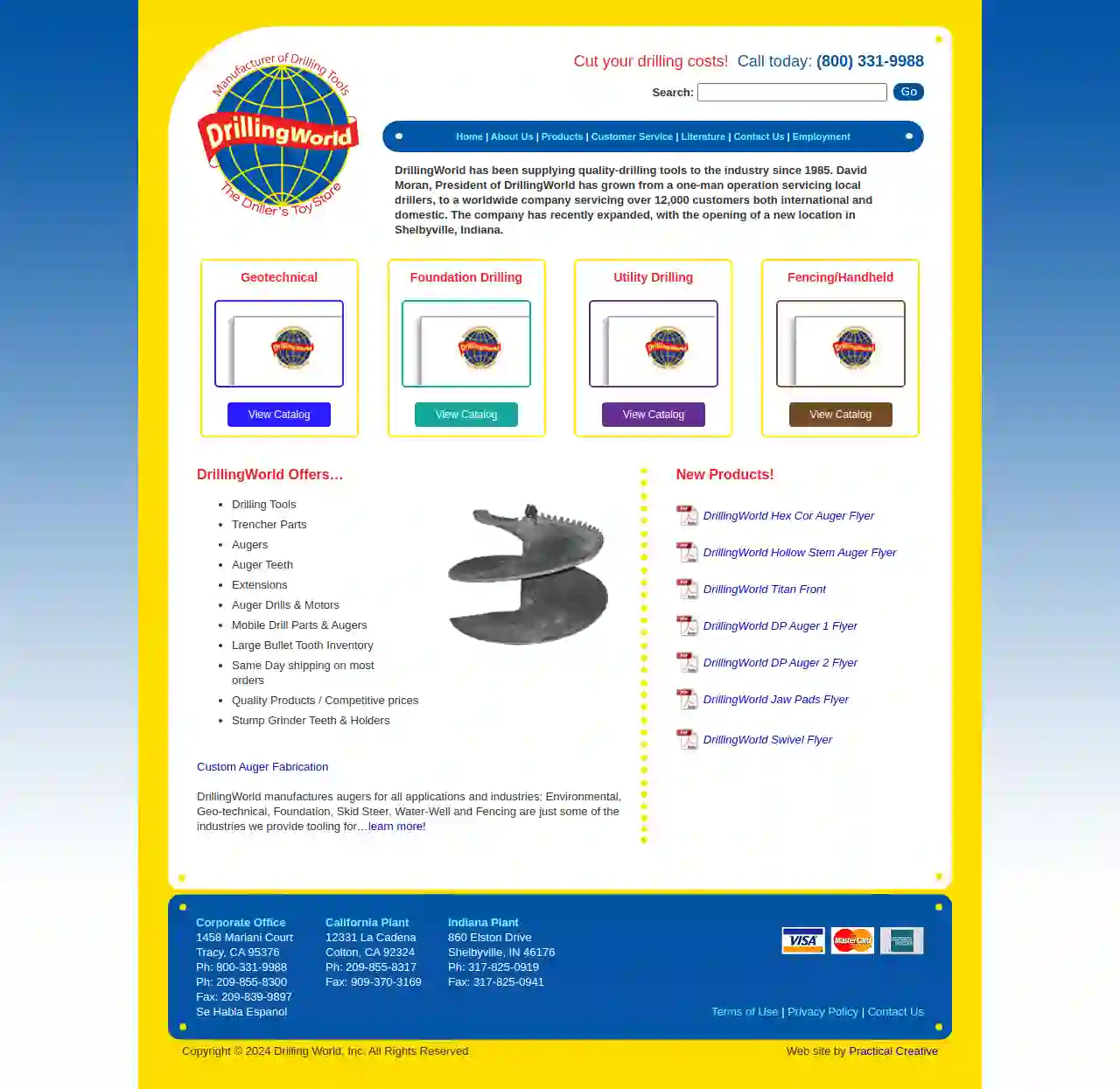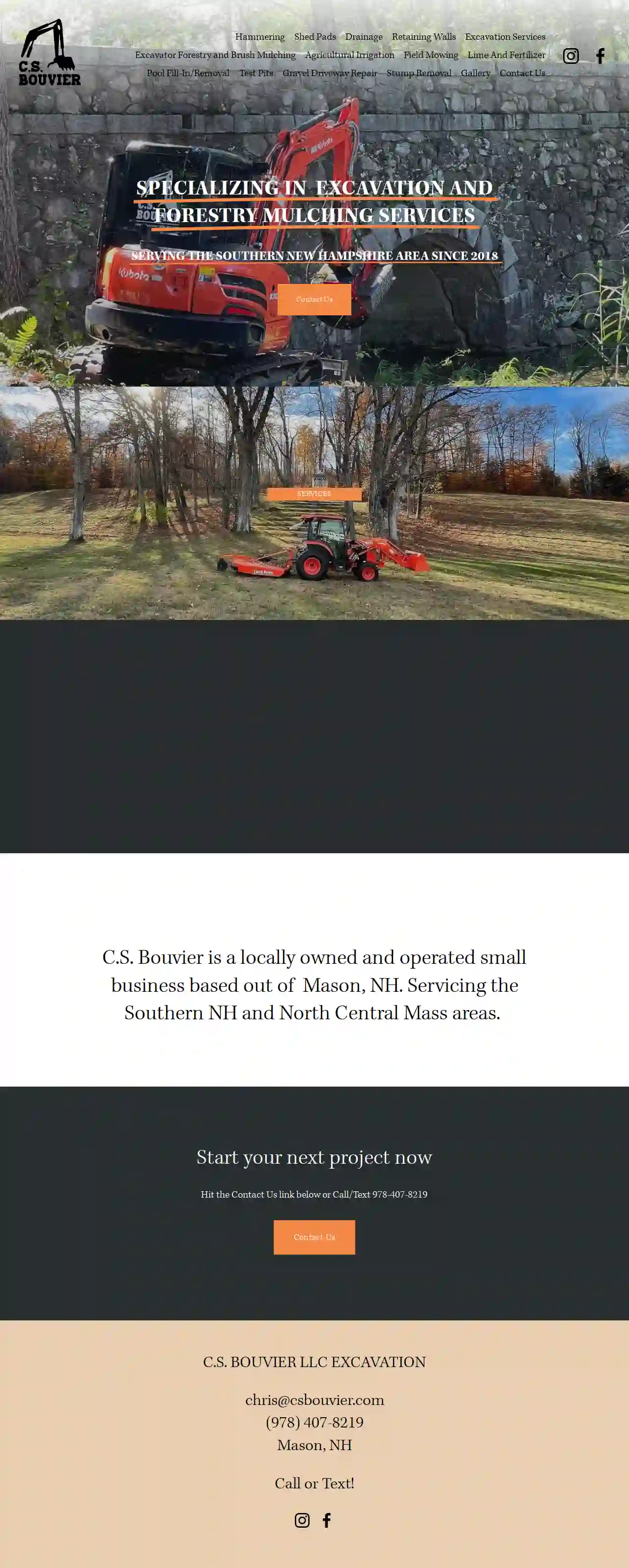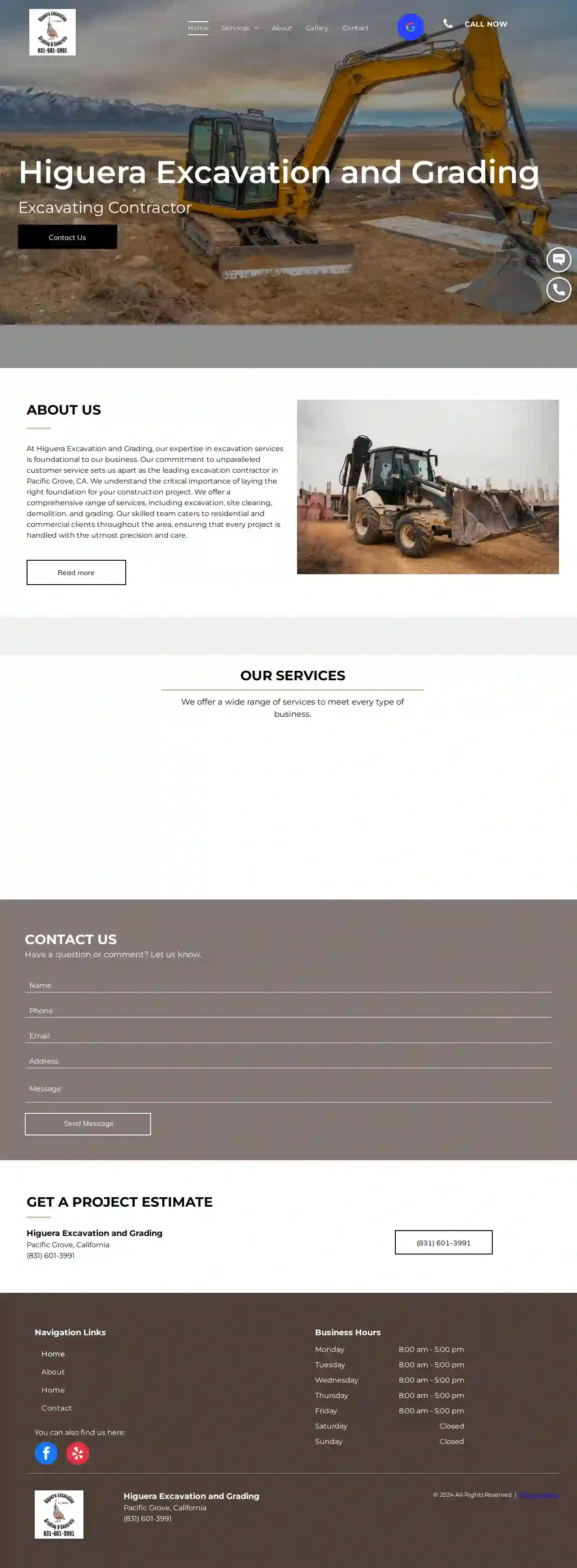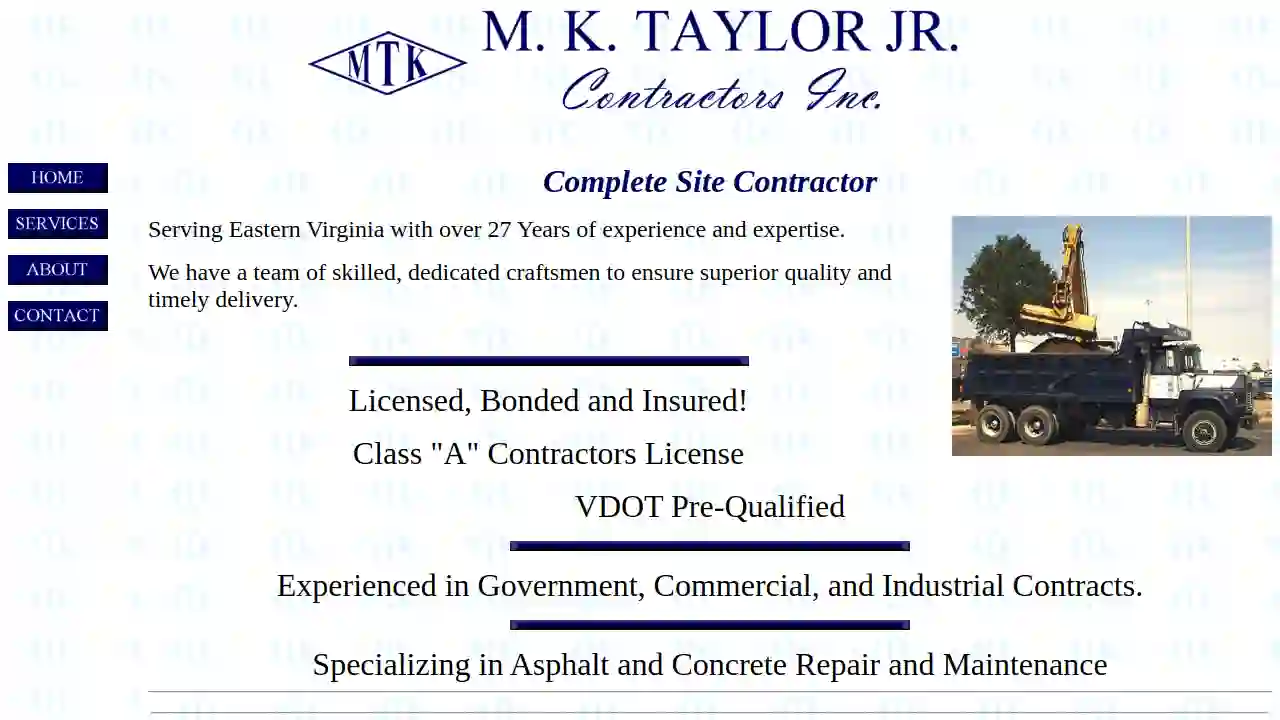Excavation Contractors Sparks
Find top Excavation Contractor in Sparks
Get multiple Excavation Services quotes for your project today! Compare profiles, reviews, accreditations, portfolio, etc... and choose the best deal.

Drilling & Trenching Supply Inc
54 reviews1458 Mariani Court, Tracy, 95376, USDrillingWorld: Your Trusted Source for Quality Drilling Tools Since 1985, DrillingWorld has been a leading provider of high-quality drilling tools to the industry. Founded by David Moran, the company has grown from a small, local operation to a global enterprise serving over 12,000 customers worldwide. We're committed to providing our customers with the best possible products and services, and we're always looking for ways to improve. Our recent expansion with a new location in Shelbyville, Indiana, is a testament to our commitment to growth and innovation. At DrillingWorld, we understand the importance of having the right tools for the job. That's why we offer a wide variety of drilling tools, trencher parts, augers, auger teeth, extensions, auger drills & motors, mobile drill parts & augers, and large bullet tooth inventory. We also offer custom auger fabrication to meet your specific needs. We're proud to serve a wide range of industries, including environmental, geotechnical, foundation, skid steer, water-well, and fencing. No matter what your drilling needs are, we have the tools and expertise to help you get the job done right. We're committed to providing our customers with the best possible service. We offer same-day shipping on most orders, and our team of experts is always available to answer your questions and provide technical support. We also offer competitive prices and a wide range of payment options. Contact us today to learn more about our products and services. We're confident that we can help you take your drilling operation to the next level.
- Services
- Why Us?
- Gallery
Get Quote
New Hampshire Paving PROS
4.929 reviewsChester, New Hampshire, USAbout New Hampshire Paving Pros New Hampshire Paving Pros is a family-owned and operated business based in Chester, New Hampshire, just east of Manchester. We've been serving the community for over 50 years, providing high-quality asphalt paving services for both residential and commercial clients. Our commitment to excellence is evident in our robust and enduring products that stand the test of time. Our Services We offer a comprehensive range of asphalt paving services, including: Driveway paving, resurfacing, and repair Parking lot paving, resurfacing, and repair Blacktop basketball courts Gravel driveways and parking lots Road paving Why Choose New Hampshire Paving Pros? We understand that choosing the right paving contractor is an important decision. Here's why you should choose us: Experience: Over 50 years of experience in the industry. Quality: We use only the highest quality materials and equipment. Value: We offer competitive pricing and free estimates. Customer Service: We are committed to providing excellent customer service. Warranty: We stand behind our work with a comprehensive warranty. Get a Free Estimate Ready to get started on your paving project? Contact us today for a free estimate. We'll be happy to answer any questions you may have.
- Services
- Why Us?
- Gallery
Get Quote
C.S. Bouvier LLC Excavation & Grading
52 reviewsMason, USC.S. Bouvier: Your Trusted Excavation and Forestry Mulching Partner in Southern New Hampshire C.S. Bouvier is a locally owned and operated small business based out of Mason, NH. We've been serving the Southern NH and North Central Mass areas since 2018, providing reliable and efficient excavation and forestry mulching services. We're committed to delivering high-quality work and exceeding our clients' expectations. When you choose C.S. Bouvier, you're choosing a team that's dedicated to your project's success. We're passionate about what we do and take pride in our ability to handle a wide range of projects, from small-scale landscaping to large-scale excavation. We understand that your time is valuable, which is why we're available for emergency services. Whether you're dealing with a driveway washout, culvert repair, drainage issues, or any other urgent need, we're here to help. Contact us today to discuss your project and get a free estimate. We're excited to work with you!
- Services
- Why Us?
- Our Team
- Gallery
Get Quote
Higuera Excavation and Grading
51 reviewsPacific Grove, USIntroducing Higuera Excavation and Grading At Higuera Excavation and Grading, our expertise in excavation services is foundational to our business. Our commitment to unparalleled customer service sets us apart as the leading excavation contractor in Pacific Grove, CA. We understand the critical importance of laying the right foundation for your construction project. We offer a comprehensive range of services, including excavation, site clearing, demolition, and grading. Our skilled team caters to residential and commercial clients throughout the area, ensuring that every project is handled with the utmost precision and care. We employ advanced equipment and methods to ensure that every excavation job is completed efficiently, safely, and with minimal disruption to your site. Site clearing and demolition services are pivotal to preparing your project’s foundation. We manage every aspect of land demolition and construction site preparation with attention to safety and detail, clearing your site effectively for its next developmental stage. Our Bobcat services stand out for their versatility, especially in smaller or complex areas where precision is crucial. Similarly, our shoring services provide critical support during excavation, maintaining stability and safety throughout your project’s duration. Grading, regrading, and resloping services are integral to our offerings. We specialize in creating the perfect landscape for your project, whether it’s for drainage improvement, foundational preparation, or aesthetic purposes. Our precision in grading ensures that your site meets all necessary requirements and specifications. We offer free estimates, ensuring transparency and no hidden costs. Higuera Excavation and Grading is your go-to excavation contractor in Pacific Grove, CA. We provide a full spectrum of services with a customer-first approach, ensuring the highest quality and satisfaction. Contact us today for a free estimate -- let us demonstrate the exceptional service and quality that fortify our reputation for reliability and excellence.
- Services
- Why Us?
- Gallery
Get Quote
M.K. Taylor, Jr. Contractors Inc.
54 reviews123 Main Street, Anytown, 12345, USMK Taylor Construction MK Taylor Construction is a family-owned and operated business with over 20 years of experience in the construction industry. We are committed to providing our clients with the highest quality workmanship and customer service. We specialize in a wide range of construction services, including: Learn More
- Services
- Why Us?
Get Quote
Wb-Koester Construction LLC
4.73 reviews14601 Highway 41 North, Suite 200, Evansville, 47725, USWB•Koester Construction, LLC: Your Earthwork Experts WB•Koester Construction (WBK) is a division of Weddle Bros. Construction Company, Inc., headquartered in Bloomington, Indiana. We operate a divisional office in Evansville, Indiana, and our core business is heavy civil projects, specializing in mass excavation and grading. We serve four primary markets: Power New Site Development, Existing Plant Expansions and Decommissioning, Ash Ponds, CCP Landfills, Raw Water Impoundments Industrial & Commercial Site Development Mass Grading, Roadways and Railways, Building Pads, Storm Water Drainage, Aggregate Base Placement, Erosion Control, Lime Stabilization Coal Mining Construction Services Reclamation, Overburden Removal, Portal Excavation, Refuse and Water Impoundments, Railroad Access Spurs and Load-out Loops Transportation Highways, Railroads, Airports and other transportation related infrastructure WBK primarily focuses on projects within a 250-mile radius of Evansville, Indiana. However, we are committed to meeting the demanding needs of our valued clients and will perform work beyond this geographic area. We typically serve Indiana, Illinois, Kentucky, and Tennessee. We have also completed projects in Michigan, Ohio, Missouri, Georgia, Oklahoma, Nebraska, and Colorado. Our management staff boasts over 200 combined years of construction experience. We understand that today's demanding production schedules require meticulous coordination between owners, engineers, and contractors. You'll find WBK to be an attentive and collaborative team player in any project situation. Contact us today and let our team work for you!
- Services
- Why Us?
- Gallery
Get Quote
G M Grading & Engineering, Inc
3.45 reviewsEnterprise, US- Services
- Why Us?
Get Quote
Venice Landclearing Inc
51 reviews4761 Parnell Rd, Zolfo Springs, 33890, USWelcome to GLT, LLC Since 2012, GLT,LLC has been offering Excavating, Grading, Agriculture Services and Vegetation Management services. We specialize in the smaller jobs the "Big Boys" can't be bothered with. Some Recent Projects Acreage Mowing September 2019 From a single residential lot to 100's of acres, we are equipped to handle your needs Roller Chopping March 2023 Chopping Scrub Oaks for invasive species reduction and improvement in Scrub Jay Habitat for the Florida Park Service Hurricane Ian Clean-up September 2022 Mitigation and clean-up of storm damage from Hurricane Ian. This property had 47 trees down! History Upon retiring from Sarasota County Fire Department in 2012, George Toms opened GLT Property Services, LLC in Nokomis. With a General Contractor Father and Grandfather, he grew up around heavy equipment; "I was running dozers and tractors before I was old enough to drive a car!" he is proud to say. "The Fire Service was a passion of mine from the time I was a child, but the time came to retire, so I pursued my second passion: heavy equipment" My Services Every job gets his personal attention: Environmental Land Clearing (Forestry Mulching) Grading Excavating Fill, Stone, Shell Agricultural Services Discing Mowing Grove Pushing snd Burning Ditch and Pond work Roller Chopping and Pasture Renovation Fence Lines and Fire Breaks Right-of-Way vegetation control (Bush Hog Mowing) Contact me today to receive a free estimate. You Get "The Boss" on Every Job It’s All in the Details We do a lot of Fire Preparation for Pile and Acreage Burns. As a career firefighter, certified in wildland and pile burning, Firelines are created that WORK. Vegetation Management For Right-of-Ways, Fence Lines, and Acreage Environmentally Friendly Clearing opens your property, but leaves the soil stabilized to prevent erosion.
- Services
- Why Us?
- Our Team
- Testimonials
- Gallery
Get Quote
The New Orleans Excavating Company
1Enterprise, USWelcome to The New Orleans Excavating Company We take great pride in pioneering excellence in excavation services. With a steadfast commitment to quality, safety, and client satisfaction, we have emerged as a leading excavating company in New Orleans, Louisiana. Our journey of over two decades has been marked by innovation, a highly skilled workforce, and state-of-the-art equipment, making us the go-to choice for a wide range of excavation and site preparation needs. As we share our story with you, we invite you to explore the core values that drive us, the comprehensive services we offer, and our unwavering dedication to delivering outstanding results. Our Foundation and Values From the outset, we embraced a set of core values that became the guiding principles of our company: 1. Integrity: We operate with utmost honesty and integrity, building trust with our clients, partners, and employees. 2. Excellence: Striving for excellence is at the heart of everything we do. We are committed to delivering top-quality workmanship that exceeds expectations. 3. Safety: The safety of our team members and clients is of paramount importance. We uphold rigorous safety standards and invest in continuous training to prevent accidents and create a secure work environment. 4. Innovation: Embracing innovation is key to our success. We continuously explore new technologies and techniques to improve our services and efficiency. 5. Client-Centric Approach: Our clients are at the center of our operations. We listen to their needs, collaborate closely, and tailor our services to meet their specific requirements. Comprehensive Excavation Services At The New Orleans Excavating Company, we offer a comprehensive suite of excavation services designed to address the diverse needs of our clients. From small-scale residential projects to large commercial ventures, we have the expertise and resources to handle projects of varying complexities. Our services include: 1. Site Preparation: Our site preparation services set the stage for successful construction projects. We clear debris, grade the land, and prepare the site for the construction process. 2. Earthmoving: With our modern fleet of excavators and bulldozers, we efficiently move earth to create the desired landscape for construction. 3. Land Clearing: Our land clearing services ensure that your site is free from overgrowth, obstacles, and debris, allowing for a clean canvas to begin construction. 4. Grading: Precise grading is essential for creating a level and stable foundation for your construction project. Our skilled operators use advanced grading equipment to ensure that your site is properly graded for optimal drainage and stability. 5. Trenching: We provide expert trenching services for the installation of utilities, such as water, sewer, gas, and electrical lines. Our team uses specialized trenching equipment to create precise and safe trenches for your utility needs. 6. Utility Installation: We offer comprehensive utility installation services, including the installation of water, sewer, gas, and electrical lines. Our experienced team ensures that your utilities are installed correctly and efficiently, meeting all applicable codes and standards.
- Services
- Why Us?
- Gallery
Get Quote
Standard Rock LTD
51 reviewsLas Vegas, US- Services
- Why Us?
Get Quote
Over 3,943+ Excavation Contractors registered
Our excavation companies operate in Sparks and surrounding areas!
ExcavationHQ has curated and vetted Top Excavation Businesses near Sparks. Find the most trustworthy pro today.
Frequently Asked Questions About Excavation Contractors
- Trench Collapses: Unstable trench walls can cave in, posing a severe risk to workers. Proper shoring and sloping are crucial safety measures.
- Utility Damage: Striking underground utilities (gas, water, electric) can cause leaks, explosions, or electrocution. Accurate utility locates and careful digging are essential.
- Falling Objects: Materials or equipment falling into excavations can injure workers. Securing work areas and using appropriate safety gear is vital.
- Equipment Accidents: Operating heavy machinery involves risks of rollovers, collisions, or mechanical failures. Trained operators and proper equipment maintenance are critical.
- Environmental Hazards: Excavated soil might contain hazardous materials (asbestos, lead). Proper testing and disposal procedures are necessary.
- New Construction: Laying foundations, basements, or underground utilities for new buildings.
- Home Additions: Creating space for new rooms, basements, or extensions.
- Landscaping: Leveling ground, creating slopes, installing retaining walls, or digging for ponds or pools.
- Drainage Improvement: Installing French drains, drainage ditches, or swales to manage water runoff.
- Utility Installation or Repair: Laying new water, sewer, gas, or electrical lines, or repairing existing ones.
- Demolition: Clearing debris and preparing the site after demolishing a structure.
- Topsoil Removal: Stripping the fertile topsoil layer from a site, often preserving it for landscaping.
- Trench Excavation: Digging long, narrow trenches for utilities (pipes, cables) or foundations.
- Basement Excavation: Removing earth to create a space for a basement beneath a structure.
- Pool Excavation: Digging a precise hole for installing a swimming pool.
- Roadway Excavation: Removing earth and preparing the ground for road construction.
- Demolition Excavation: Clearing debris and preparing the site after demolition.
- Channel Excavation: Creating channels for drainage or irrigation.
- Project Type and Size: Ensure the contractor has experience handling projects similar to yours in scale and complexity.
- Reputation and Reviews: Check online reviews and testimonials, and request references from previous clients.
- Licensing and Insurance: Verify that the contractor is properly licensed and insured to protect you from liability.
- Equipment and Resources: Confirm that they have the necessary equipment and resources for your project's needs.
- Communication and Transparency: Choose a contractor who communicates clearly, provides detailed estimates, and keeps you informed throughout the project.
- Safety Record: Inquire about their safety protocols and track record to ensure a safe work environment.
- Price: While price is important, it shouldn't be the only deciding factor. Balance affordability with experience, reputation, and quality of service.
What are the risks associated with excavation?
How do I know if I need excavation for my project?
What are the different types of excavation?
How do I choose the right excavation contractor for my project?
What are the risks associated with excavation?
- Trench Collapses: Unstable trench walls can cave in, posing a severe risk to workers. Proper shoring and sloping are crucial safety measures.
- Utility Damage: Striking underground utilities (gas, water, electric) can cause leaks, explosions, or electrocution. Accurate utility locates and careful digging are essential.
- Falling Objects: Materials or equipment falling into excavations can injure workers. Securing work areas and using appropriate safety gear is vital.
- Equipment Accidents: Operating heavy machinery involves risks of rollovers, collisions, or mechanical failures. Trained operators and proper equipment maintenance are critical.
- Environmental Hazards: Excavated soil might contain hazardous materials (asbestos, lead). Proper testing and disposal procedures are necessary.
How do I know if I need excavation for my project?
- New Construction: Laying foundations, basements, or underground utilities for new buildings.
- Home Additions: Creating space for new rooms, basements, or extensions.
- Landscaping: Leveling ground, creating slopes, installing retaining walls, or digging for ponds or pools.
- Drainage Improvement: Installing French drains, drainage ditches, or swales to manage water runoff.
- Utility Installation or Repair: Laying new water, sewer, gas, or electrical lines, or repairing existing ones.
- Demolition: Clearing debris and preparing the site after demolishing a structure.
What are the different types of excavation?
- Topsoil Removal: Stripping the fertile topsoil layer from a site, often preserving it for landscaping.
- Trench Excavation: Digging long, narrow trenches for utilities (pipes, cables) or foundations.
- Basement Excavation: Removing earth to create a space for a basement beneath a structure.
- Pool Excavation: Digging a precise hole for installing a swimming pool.
- Roadway Excavation: Removing earth and preparing the ground for road construction.
- Demolition Excavation: Clearing debris and preparing the site after demolition.
- Channel Excavation: Creating channels for drainage or irrigation.
How do I choose the right excavation contractor for my project?
- Project Type and Size: Ensure the contractor has experience handling projects similar to yours in scale and complexity.
- Reputation and Reviews: Check online reviews and testimonials, and request references from previous clients.
- Licensing and Insurance: Verify that the contractor is properly licensed and insured to protect you from liability.
- Equipment and Resources: Confirm that they have the necessary equipment and resources for your project's needs.
- Communication and Transparency: Choose a contractor who communicates clearly, provides detailed estimates, and keeps you informed throughout the project.
- Safety Record: Inquire about their safety protocols and track record to ensure a safe work environment.
- Price: While price is important, it shouldn't be the only deciding factor. Balance affordability with experience, reputation, and quality of service.